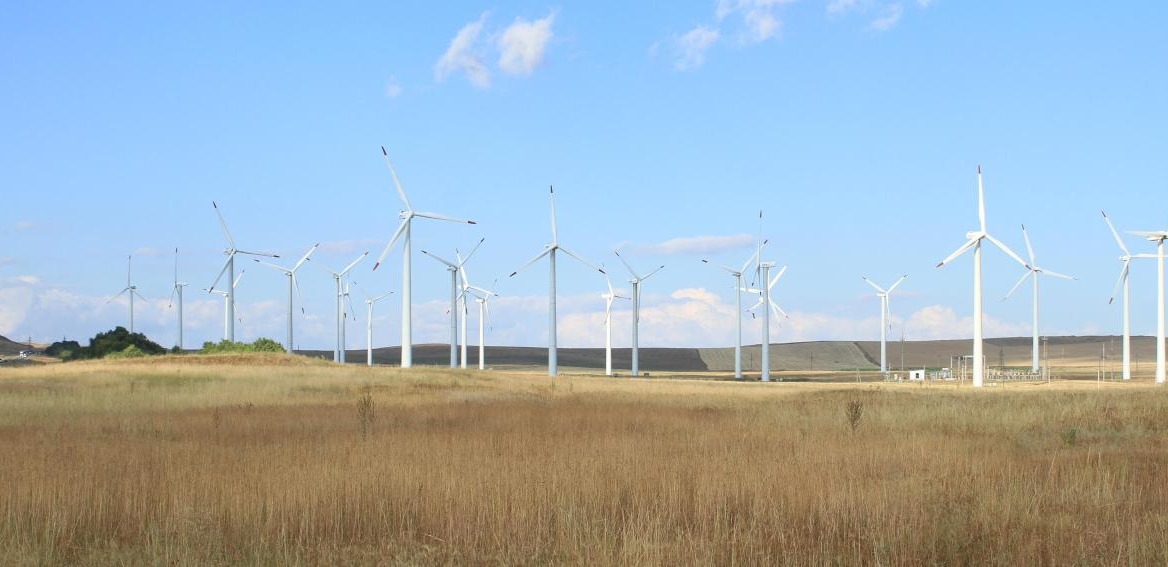The region is the leader in renewable energy capacity in the country.
What happened
Wind power plants with a capacity of 2 GW will be built in the Zhambyl region. And by 2028, the region will have 25 renewable energy facilities. Their total capacity will be 2.5 GW.
What are the capacities now?
There are currently 22 solar, wind and hydroelectric power plants in operation, producing a combined total of over 500 MW of energy.
There are currently 22 facilities operating with a capacity of 551.3 MW. Including:
- 6 hydroelectric power plants (24.4 MW);
- 10 wind power plants (275.6 MW);
- 6 solar power plants (251.2 MW).
Last year, electricity production amounted to 4,348.6 million kWh, and this year it is planned to produce 4,560.8 million kWh.

Zhambyl region is the leader in renewable energy capacity
Zhambyl region holds the lead in renewable energy capacity in the republic. According to experts, favorable conditions have been created in the region: there are opportunities for large wind power plants that are successfully operating. Geographically, it turned out that there is a lot of sun here, and, importantly, hydropower is developed.
“Zhambyl is indeed the leader in renewable energy generation. Almost 20% of all renewable energy generation comes from the Zhambyl region. International obligations of all countries require the introduction of renewable energy sources. Climate change dictates the transition from traditional, dirty energy sources: these include coal, oil and even gas, and especially nuclear power plants, to environmentally friendly, renewable energy sources. This is because resources are running out, and renewable energy technologies are becoming accessible and cheap. Over the past decades, solar energy production technologies have fallen in price by 80%, that is, almost five times,” said Bulat Yesekin, international expert and coordinator of the Central Asian Platform for Water Resources Management and Climate Change.
Plans for the future
The region has opportunities for developing renewable energy sources. All conditions for the construction of solar, wind and hydroelectric power plants are provided. The regional akimat prioritizes investment projects in this area.

Overall, three major renewable energy projects are planned for implementation in the coming years. In particular, these are:
- Total Eren’s wind power plant in the Moyinkum district with a capacity of 1 GW;
- Masdar (UAE) wind power plant in the Sarysu and Talas districts with a capacity of 500 MW;
- China Power International Holding Limited’s 500 MW wind power plant.
“The planned 2.5 GW is a large volume. The existing capacities allow to cover 20% of the needs of the entire Zhambyl region. They can completely cover their needs by 2030 with the help of renewable energy sources. Canada and Japan are quickly switching to renewable energy sources, Norway and Denmark will completely switch to a “green” economy before 2030. In Germany, conditions are created for reimbursement of up to 50% of the costs associated with the installation of renewable energy sources,” says Bulat Yesekin.
The current system of state support for the development of renewable energy sources has been enshrined in the legislation of the Republic of Kazakhstan since 2009. The support system was developed taking into account the best international practice.
In 2013, specific goals for the development of the renewable energy sector were formulated and, as a result, the market size and potential for reducing greenhouse gases from renewable energy sources were determined. In the Concept of Kazakhstan’s transition to a “green” economy and the “Kazakhstan-2050 Strategy”, these are the goals of increasing the share of alternative and renewable energy in the country’s energy balance to 3% in 2020, to 15% in 2030 and to 50% in 2050.
https://bes.media/news/ekspert-k-2030-godu-zhambilskaya-oblast-mozhet-polnostyu-zakrit-svoi-potrebnosti-energetiki-s-pomoshyu-vie/

